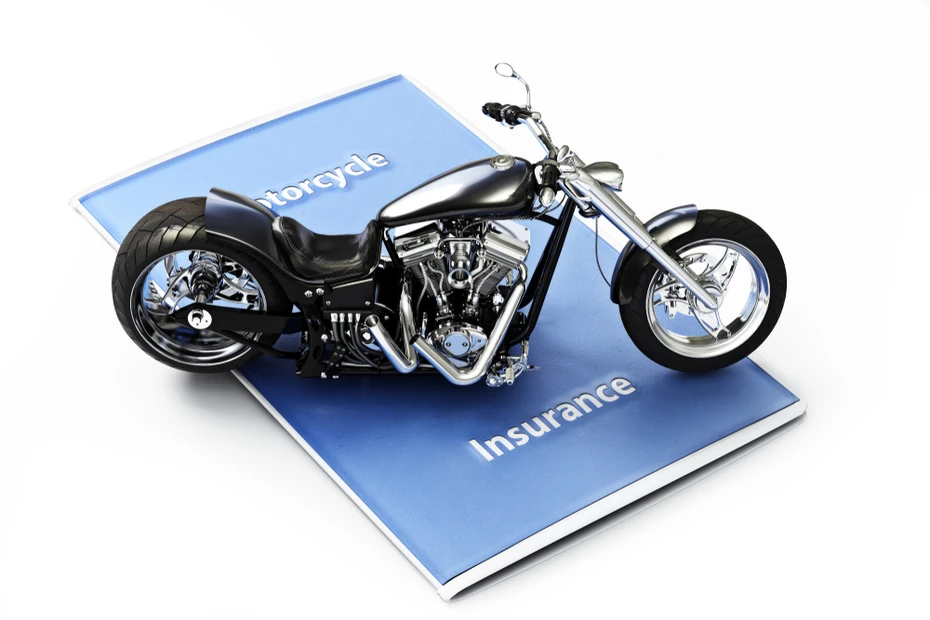All You Need To Know About Your Two Wheeler Insurance Policy Coverage
Two Wheeler Insurance Policy Coverage
Two-wheelers are more than just vehicles in India's colourful lanes and busy highways; they are symbols of convenience, independence, and agility. It is essential to comprehend the intricacies of your two-wheeler insurance policy in order to guarantee a hassle-free and safe riding experience. This article intends to provide you with a thorough understanding of your two-wheeler insurance policy, from coverage selections to claim processes. Let's explore the nuances of protecting your most valuable asset.
Table of Contents
- Understanding How Important Two-Wheeler Insurance Is
- Understanding the Different Types of Two-Wheeler Insurance Coverage
- Examining the Specifics of the Coverage
- IDV: Rate of Depreciation on Two Wheelers
- Taking Note of the Exclusions
- Being Aware of the Claim Procedure
- Tips for Selecting the Best Two-Wheeler Insurance Plan
- Conclusion
- FAQs
Understanding How Important Two-Wheeler Insurance Is
It's critical to understand the significance of a two-wheeler insurance policy before we go any further. It is not only required by law in India, but it also acts as a safety net for your finances, shielding you from unanticipated costs brought on by theft, accidents, or natural catastrophes. Furthermore, having a strong insurance policy might protect you from legal obligations in the event that third parties are harmed or suffer damages.
Understanding the Different Types of Two-Wheeler Insurance Coverage
There are numerous two-wheeler insurance plans available in India, each with varying levels of protection and to suit different demands. Let's interpret the most common kinds:
Insurance for Third Parties' Liability
Required by Indian law, this coverage pays for any harm or loss a third party sustains in an accident involving your two-wheeler, whether it be to their person or property. It does not, however, pay for harm to you or your own car.
All-inclusive Insurance Plan
Provides enhanced security: the complete policy includes coverage for damages to your own car caused by theft, vandalism, accidents, and natural disasters in addition to third-party liability.
Depreciation-Free Coverage
This add-on policy goes one step further to protect your interests by guaranteeing that you will get the full claim amount, depreciation-free.

Examining the Specifics of the Coverage
Now that you know the many kinds of plans that are out there, it's time to explore the details of what these policies typically cover.
Damages Owing to Natural Disasters
Comprehensive insurance covers losses resulting from a variety of natural disasters, including cyclones, earthquakes, and floods. This is a blessing, particularly in light of India's diverse topography and climate.
Human-caused catastrophes and vandalism
Your all-inclusive policy offers protection against man-made disasters like rioting, vandalism, and terrorist acts in addition to natural disasters.
Personal Injury Protection
This crucial element guarantees that the policyholder will be compensated in the event that an accident involving the covered two-wheeler results in permanent disability or death.
Loss of property
Being the victim of theft can be terrible. Relief is provided by comprehensive insurance policies, which pay for the monetary losses brought on by the theft of the insured car.
IDV: Rate of Depreciation on Two Wheelers
IDV in bike insurance is calculated on the basis of market value of your two wheeler when the policy commences which keeps changing with time and depreciation is included while IDV is calculated. IDV is not calculated on the basis of the premium you pay for your bike insurance policy so it is advised to get an insurance policy for your two wheeler as soon as you purchase it to avail high IDV.
The following table shows how depreciation schedule of IDV in two-wheeler insurance:
Age Two-Wheeler |
Depreciation Percentage to Calculate IDV |
|
Two-wheeler not more than 6 months old |
5% |
|
More than 6 months, but not more than a year |
15% |
|
More than 1 year, but less than 2 years |
20% |
|
More than 2 years, but less than 3 years |
30% |
|
More than 3 years, but less than 3 years |
40% |
|
More than 4 years, but less than 2 years |
50% |
Note: IDV for vehicles more than 5 years old is decided by mutual agreement between the insurance company and the insured.
Taking Note of the Exclusions
Knowing the exclusions - the situations in which your policy won't provide coverage—is equally important. A few typical exclusions are:
- Regular wear and Tear: Generally speaking, insurance policies do not pay for expenses resulting from a vehicle's regular wear and tear.
- Electrical or Mechanical Failure: In the event that your car breaks down mechanically or electrically, the coverage would not pay for the repairs.
- Driving While Intoxicated: Damages incurred while the rider is impaired by drugs or alcohol are not covered by the policy.
Breaking Traffic Laws: Rejecting a claim may result from engaging in traffic infractions including riding without a valid licence or running traffic signals.
Being Aware of the Claim Procedure
Understanding the process of filing a claim can be quite helpful in the sad event of an accident or theft. To assist you in smoothly navigating the bike insurance claim procedure, below is a step-by-step guide:
Step 1: Instant Notification
Tell your insurance company about the occurrence right away. Claims processing is streamlined with prompt reporting.
Step 2: Report to Police
Get a copy of the First Information Report (FIR) and report theft or serious accidents to the closest police station.
Step 3: Sending in Documents
Forward the required paperwork, together with the completed claim form, to the insurance company. The policy document, the certificate of car registration, the driver's licence, the FIR copy (if applicable), and any other documents the company designates may be among them.
Step 4: Evaluation of Vehicles
When an insurance company receives a damage claim, it will send a surveyor to evaluate the damage and determine the cost of repairs.
Step 5: Settlement of Claim
Once the claim has been approved, the insurance company will either pay the network garage directly or reimburse you for the cost of the repairs.
Tips for Selecting the Best Two-Wheeler Insurance Plan
Take into account the following advice to make sure you select the coverage that best meets your needs:
Determine Your Needs
Take into account variables like the vehicle's age, how often you use it, and the location in which you use it most frequently.
Examine Policies
Examine the various policies on the market, weigh the pros and cons of each, and decide with knowledge.
Check the Reputation of the Insurer
Pick an insurance provider with a solid track record in the industry, paying particular attention to their customer satisfaction and claim settlement percentage.
Select the Right Add-Ons
Selecting appropriate add-ons can improve the coverage provided by your insurance. Roadside help, engine protection cover, and zero depreciation cover are examples of common add-ons.
Conclusion
In India, having a two-wheeler is not just convenient; it also allows you to move freely and nimbly through the busy streets. Getting the appropriate insurance coverage to ensure your travel is safe and secure becomes essential to this experience.
With a thorough understanding of your two-wheeler insurance coverage, you can ride with more confidence and peace of mind, knowing that you are protected from unanticipated financial hardships. As you ride the vibrant lanes of India, let your two-wheeler insurance coverage be your steady partner, ensuring you from the uncertainties of the road. Stay covered and ride safely.
FAQs
- What distinguishes a comprehensive two-wheeler insurance coverage from a third-party policy?
The damages or injuries a third party sustains in an accident involving your two-wheeler are covered by a third-party insurance policy. In India, the law requires it. On the other hand, a comprehensive policy offers more complete protection by covering your car against theft, accident-related losses, and natural and man-made disasters in addition to third-party coverage.
- How important is it to select the appropriate insurance for a two-wheeler?
Selecting the appropriate insurance plan guarantees that you will have sufficient funds available in the event of mishaps, robberies, or property damage. By protecting you against significant out-of-pocket costs and legal issues, it ensures your peace of mind when riding a motorbike.
- Do two-wheeler insurance policies have any exclusions?
Yes, there are a number of exceptions. These include, but are not limited to, driving while under the influence of alcohol or drugs, mechanical or electrical failure, and damages resulting from natural wear and tear. Knowing this is essential if you want to prevent claim denials.
- Explain the meaning of add-ons in two-wheeler insurance coverage and their practicality.
In order to improve the protection provided by your base policy, you can choose to add-ons, which are extra coverage options. These could include roadside assistance, engine protection, 0% depreciation coverage, etc. They give individualised protection that meets your demands, strengthening and expanding your policy.
- How does the insurance premium change based on my two-wheeler's engine capacity?
The insurance rate is affected by the engine capacity of your two-wheeler, which is expressed in cubic centimetres (cc). A bigger engine capacity results in a higher cost because it is considered to be a higher risk.
- How can I file a claim under my insurance for a two-wheeler?
In order to file a claim, you must notify your insurance company as soon as possible after the incident, report the theft or major accident to the police, provide the required paperwork to the insurer, have your car inspected by a surveyor assigned by the business, and then have the claim resolved through reimbursement or a direct settlement with the garage.
- What does a No-Claim Bonus (NCB) mean in relation to insurance for two-wheelers?
The insurer will provide you a discount on the renewal rate if you did not file any claims during the prior policy period. This is known as a No-Claim Bonus. It is an incentive for being a conscientious rider and can build up over time, resulting in significant premium savings.
- If I purchase a new two-wheeler, may I transfer my No-Claim Bonus?
In response, the policyholder, not the car, is the one associated with the No-Claim Bonus. Therefore, if you choose to sell your old car and get a new two-wheeler, you can transfer the NCB to the new one.
- Can I renew my insurance for a two-wheeler online?
Yes, you can renew your two-wheeler insurance coverage online via the official website or mobile app of most insurers. You can also select to add new covers or change the terms of your policy using this easy and time-saving approach.
- In India, what are the legal ramifications of not possessing a current coverage for two-wheeler insurance?
In India, it is illegal to drive without a valid two-wheeler insurance policy. This can lead to penalties, fines, or even the suspension of your driver's licence. Furthermore, in the event of an accident or damage to your car, you would be responsible for paying for any associated costs on your own.























































